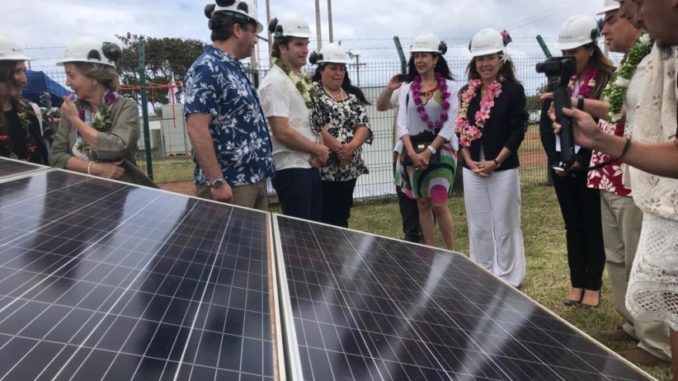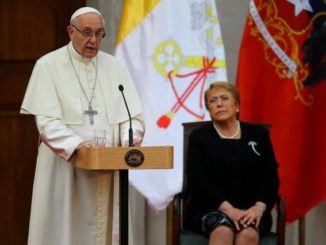
SANTIAGO – Chile’s Energy Minister Susana Jiménez on Monday inaugurated the Tama te Ra’a plant, composed of 400 solar panels that make up a total of 100 KW, which replaces the 8% of diesel consumption of the current generation of the island.
The Secretary of State also participated in the training of the “Change the focus” program, and in the second most important festival for the islanders: Mahana or Te Re’o or Day of the Rapa Nui Language, which allows preserving their native language.
Inauguramos la primera planta fotovoltaica de Isla de Pascua que reducirá en 8% el consumo de diésel en generación eléctrica. Este es el primer paso de otros proyectos de energía renovable que queremos impulsar en la hermosa Rapa Nui pic.twitter.com/OlQANECtE6
— Susana Jiménez (@susanajimenezs) November 9, 2018
With the traditional greeting “Iorana” was received the Minister of Energy, Susana Jiménez, on his arrival to Easter Island, the largest of the islands of Chile insular, located in the middle of the Pacific Ocean, 3,700 km from Caldera, and administratively owned to the Valparaíso Region.
The governor of the Province of Rapa Nui, Tarita Alarcón, and the mayor, Pedro Edmunds, were the hosts during the first official visit of the Holder of Energy to the island, who headed for two days an intense and citizen agenda.
“This initiative stands out for its innovation and for the change of paradigm regarding the type of generation that exists to date in Rapa Nui, because it will allow us to move from a generation based on fossil fuels to clean and renewable sources, which constitutes the first step to the incorporation, with more and more force, of the renewable energies in this wonderful island,” explained the minister Susana Jimenez.
?⚡️Inauguración de primera planta fotovoltaica en Isla de Pascua ☀️⚡️♻️? @susanajimenezs : “Este es el primer paso para tener una generación más renovable y limpia en la isla” #EnergíasRenovables #IslaDePascua #Rapanui pic.twitter.com/tOsbwECDYM
— Energía (@MinEnergia) November 9, 2018
The Secretary of State stressed that this “is a particularly relevant issue for the Rapa Nui community, since bringing the energy matrix towards sustainable sources is not only a contribution to the reduction of greenhouse gas emissions, but also a way of preserving the island, its people and its culture. ”
For his part, the general manager of Acciona Energía, José Ignacio Escobar said that “this plant demonstrates that renewable energy is not only a contribution to large interconnected systems, but also a contribution to reduce the gap of inequality and poverty energy “.
. @DeMromo inauguración Tama te Ra’a #RapaNui "Este es un hito concreto respecto a caminar hacia la sustentabilidad del territorio de la Isla, y nos exige seguir en la senda de evaluar otros proyectos, no sólo en energía, también en los otros ámbitos del desarrollo sustentable" pic.twitter.com/Dc0NIvukBf
— Corfo (@Corfo) November 9, 2018
The plant -constructed by the company Acciona and financed through the law of donations-, is operated by workers of the company Sasipa, who were trained so that they can carry out the necessary maintenance and have the capacity to react.
? Estamos muy orgullosos de anunciarles que nuestra planta fotovoltaica Tama Te Ra’a en #RapaNui ya está operando, abastenciendo de energía limpia al 10% de la población de la Isla.#InvierteEnElPlaneta ?
(Parte 1) pic.twitter.com/gN8DviY5uY
— ACCIONA Chile (@ACCIONA_CL) November 9, 2018
On her trip to the island, Susana Jiménez also announced that during 2019 the construction of another photovoltaic plant will begin in the sector of Vai a Repa.
In this context, Susana Jiménez explained that the 2018 program considers the delivery of 230,000 LED bulbs in schools and high schools, impacting a total of 57,500 students throughout the country, officials and teachers with four LED bulbs packs.
The use of LED technology light bulbs saves between 40% and 90% electricity consumption, compared to other technologies.



